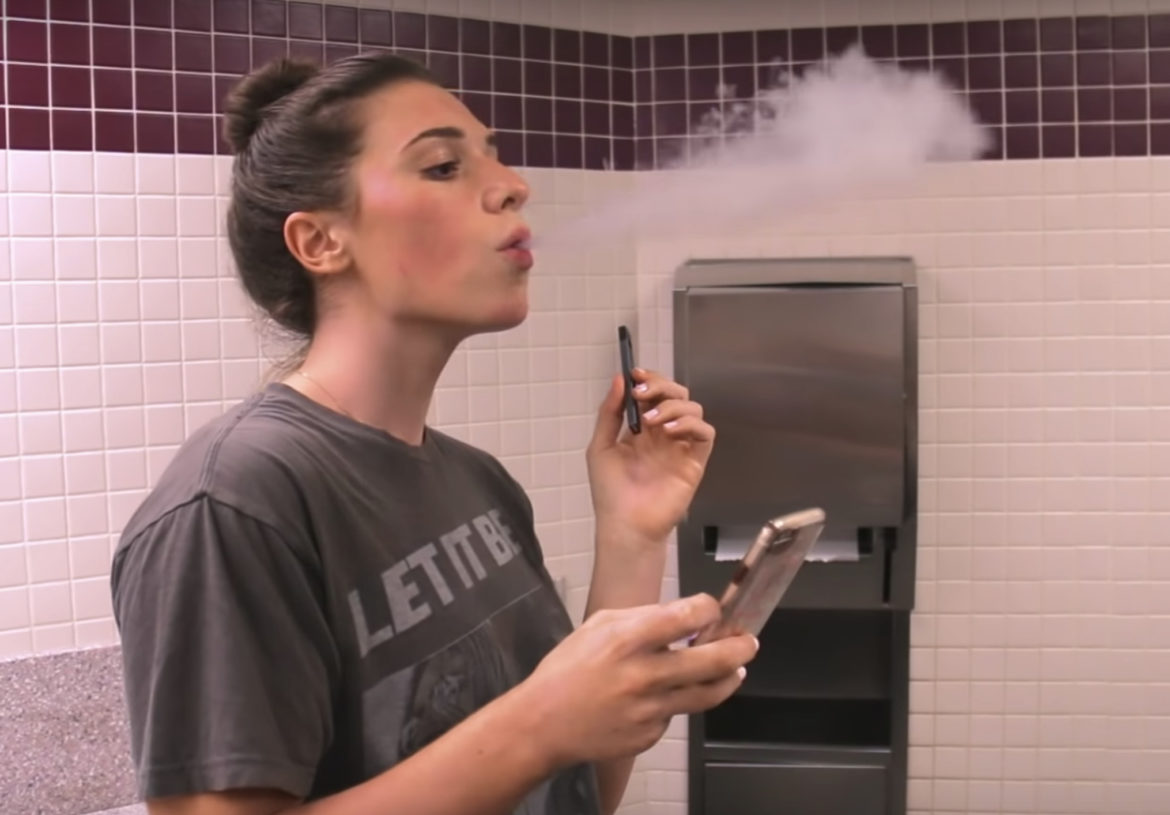In American schools today there is a silent epidemic that occurs every three minutes when Students are spotted smoking. The public health experts call teenage vaping as a full-blown epidemic. According to CDC there are more than 40% of high school students and 80% of middle schoolers have tried electronic cigarettes. The majority (99%) of these devices contain nicotine, an addictive chemical which rewires developing brains and often is a way to get into smoking cigarettes. Teachers, parents, and administrators feel increasing pressure to act. Vape detectors are a sophisticated technology that is fast becoming a necessity on all campuses. Among the leaders, Triton and 3D Sense are two that stand out as vape detectors that schools can use that go beyond simply sound an alarm.

How do Vape Detectors are designed: They work with precision without Intrusion
A modern vape smoke detector like the Triton ULTRA Smart Safety Sensor doesn’t rely on cameras or audio recordings ensuring 100% privacy compliance while still delivering actionable intelligence. It utilizes particulate sensors that evaluate the air in real-time. When vape aerosols or cigarettes smoke, marijuana vapor, or masking agents (like heavy perfumes) occur the device sends immediate alerts via text or email to a designated team. False positives stay extremely minimal, ensuring that administrators are confident that every notification demands immediate attention.
The expense of deployment is decreased when one unit is used to cover an entire room. Triton users typically mention that vaping incidents have reduced significantly in the first five weeks after installation. Why is that? Data-driven deterrence. Triton Cloud Dashboard offers an “hotspot” of the places and when vaping takes place most often. Principals are able to guide security personnel or hall monitors to the areas they’re needed most.
Beyond Detection, Occupancy Visibility and Loitering control
What sets Triton in a different way from standard vape detectors is the patent-pending occupancy visualization technology. The ULTRA Sensor records the time spent in a room without recording any images or sounds. Administrators can see heat maps that have colored codes that highlight the time when bathrooms turn into social hubs, prime locations for vaping as well as prolonged close contact which spreads respiratory illnesses.
Stanford Medicine’s research demonstrates the significance of this issue Students who smoke cigarettes are five times more likely of contracting COVID-19. Vape detectors are able to improve air quality in schools by reducing congregation. This reduces transmission risk of all airborne pathogens. The dual advantage, post-pandemic, makes these devices indispensable.
Data can be transformed into discipline and dialogue
Numbers tell an interesting story. The reports module of Triton provides the quantitative proof of incidents’ timingstamps and the locations. It also reveals trends in frequency. Schools can provide this data to schools’ boards of directors, parents’ groups or even to students. When a campus shows an increase of 60% in detections following the rollout of detectors there is a gradual loss of doubt. Students are able to see commitment from parents; they accept the consequences.
Teachers can have a bigger impression by introducing vape detectors in the first day of class. The 3D Sense model, for instance, is explicitly marketed as an deterrent. “Let students know the air itself is watching,” guidance materials advise. The next step: The social impact of triggering an alarm can be greater than an instruction.
A Multi-Front Strategy Schools Can’t Ignore
Vape detectors cannot stop smoking on their own, however they’re part of a complete solution.
Alerts in real-time spot incidents that are in the process of being resolved.
Education: Evidence-based research drives curricula that discourage smoking.
Deterrence- Signage with established consequences can alter behaviour.
Discipline – Hotspot data justifies targeted enforcement.
Support Schools can pair detections with cessation resources for struggling students.
The CDC stresses that reversing the trend requires “buy-in from educators, parents, and society.” Vape detectors provide the missing link: immediate, objective feedback that converts positive intentions into tangible results.
Deployment It’s Easy
It takes just a few minutes to register devices in the Triton Cloud Dashboard. Administrators can add contacts, alter notifications rules, and establish alert thresholds. Make a scheduled demo to discover the ease of use.
Conclusion
Every puff you don’t take is a risk to an addiction that lasts for a lifetime. Each bathroom gathering which is not spotted is an hazard to your health and safety. Vape detectors such as 3D Sense and Triton for schools are more than monitoring. They also provide information in the form of discouragement, motivation, and evidence of improvement. The campuses that have them simply respond to the growing vaping epidemic and regain control over the issue.
With just one sensor for every space, privacy-safe insights into occupancy and alarm systems that are quick to respond, these tools turn a few flimsy concerns into concrete victories. Do not put off the task in this day and age, where 40% of high schoolers have already tried it and the number of middle schoolers are on the rise daily. Be sure to be the first ones to be able to hear the news your school is saying.
